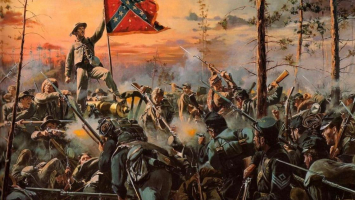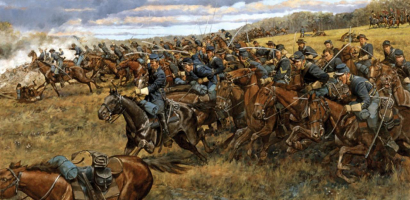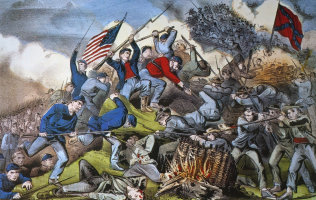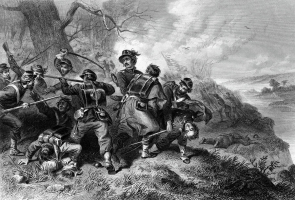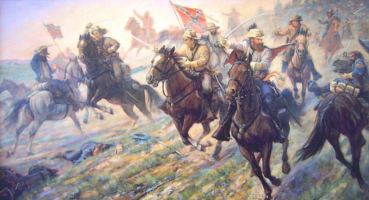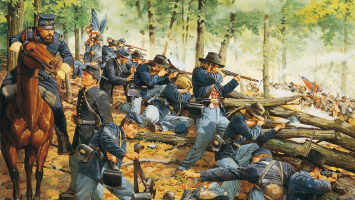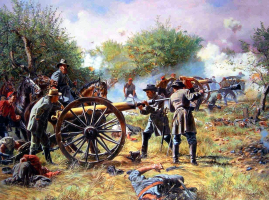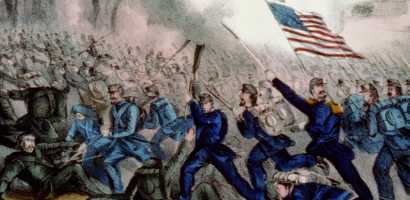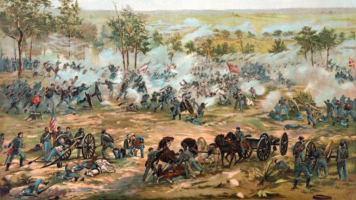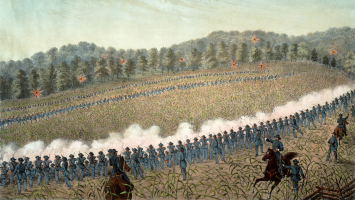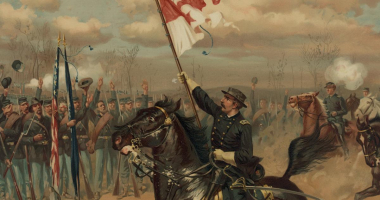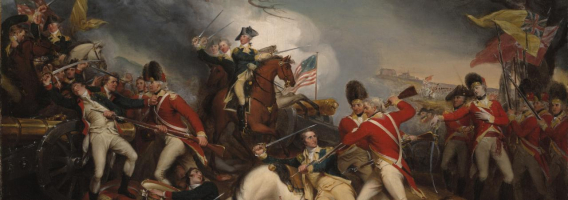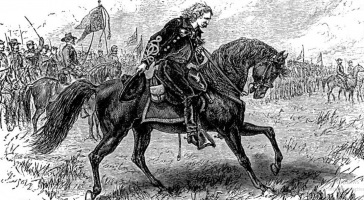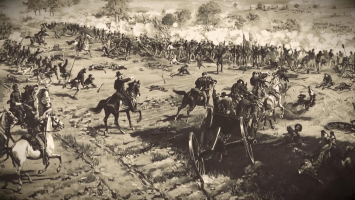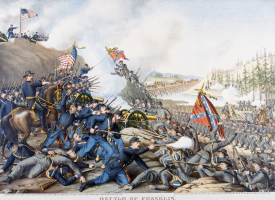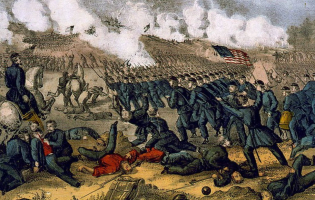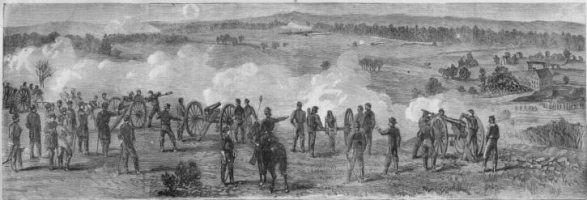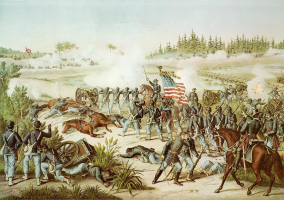Top 9 Facts About The Battle of Resaca
The American Civil War's Atlanta Campaign included the Battle of Resaca, which took place from May 13 to 15, 1864, between a Union force commanded by William ... read more...Tecumseh Sherman and the Confederate Army of Tennessee under Joseph E. Johnston. The battle at Resaca showed that the Confederate army was outnumbered and could only hold back the Union forces' advance into Georgia. Please consider these top facts about the battle of Resaca to expand your knowledge.
-
Both the Union and Confederate soldiers in Northern Georgia depended on the Western & Atlantic Railroad for their survival. It was a reliable source of supplies for Gen. Joseph E. Johnston and Maj. Gen. William T. Sherman exploited it to provide his force with food and munitions as they advanced deeper into the territory of the enemy. By cutting the rail line south of Johnston and securing it for himself in the north, Sherman knew he could force Johnston into retreat. Sherman was well aware of these logistical issues.
The Confederate army had established a formidable defensive line north of Dalton and along Rocky Face Ridge during the winter of 1863–1864, Sherman did not intend to attack the Confederate position like Grant was planning to do against Lee in Virginia, despite the fact that the United States had a significant numerical advantage (110,000 to 53,800). Instead, he intended to deploy a section of his force under Maj. Gen. James B. McPherson to the south, beyond the Rebels' left flank, and through the undefended Snake Creek Gap in order to divert Johnston. From there, McPherson was supposed to advance to the east and cut the rail line close to Resaca, compelling Johnston to give up his Dalton defenses.
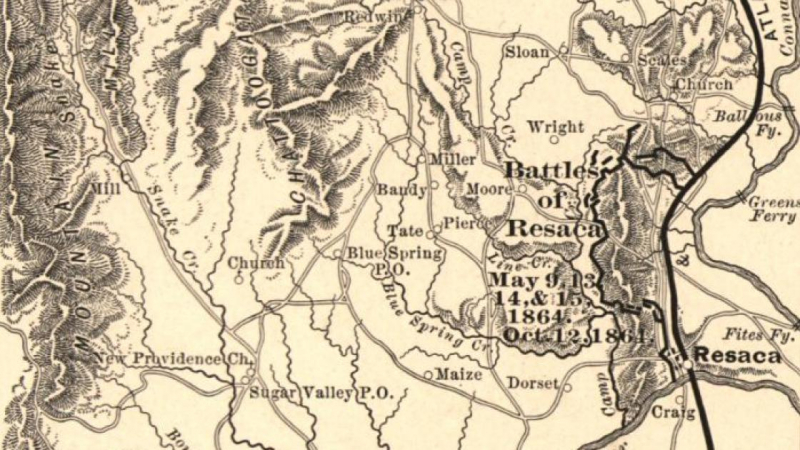
American Battlefield Trust 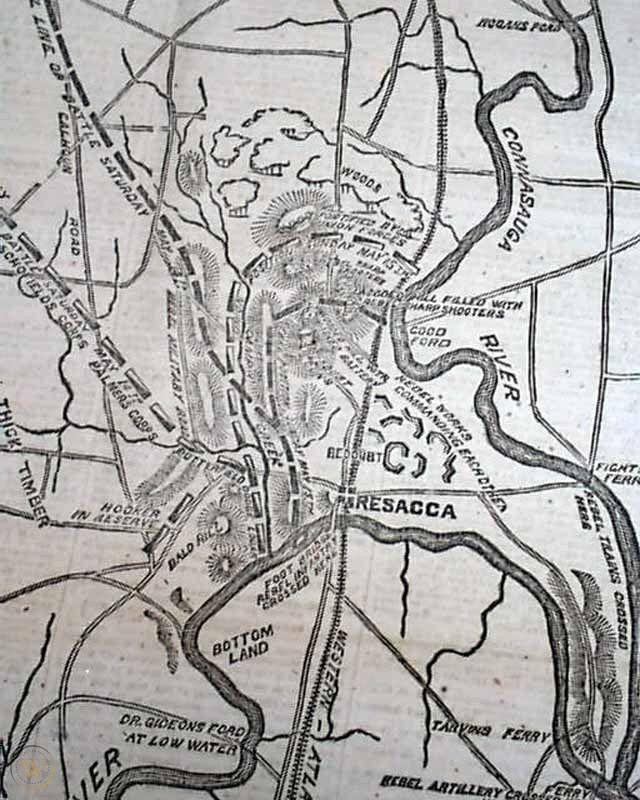
WorthPoint -
On May 9, 1864, at 5 a.m., McPherson had his soldiers moving in accordance with Sherman's directive to cross Snake Creek Gap and attack the railroad at or close to Resaca. The lead division, under Brig. Gen. Thomas Sweeny, was able to capture Bald Hill, forcing the Confederates to flee back to their fortifications and across Camp Creek, a deeply gullied creek that flows into the Oostanaula River to the south. Bald Hill was in Sweeny's control, and from there they could see Resaca and, more importantly, the railroad bridge crossing the Oostanaula.
Sweeny's division was to hold Bald Hill, while McPherson despatched additional forces to the northeast to scout possible approaches to the railroad. McPherson then lost his composure. McPherson gave Sweeny the order to return to Snake Creek Gap out of concern that Johnston might send troops from Dalton to force him back. The infantry of the Union withdrew and left Bald Hill. Sherman was "beyond measure" upset to learn that McPherson had failed to cut the railroad at Resaca. While he led the remainder of the army through Snake Creek Gap, he gave the order for McPherson to dig in. Sherman had the unfortunate luck that the Confederates were also digging in. So, it can be concluded that McPherson, concerned about Confederate defenders, could have taken Resaca prior to Sherman's arrival, but withdrew his troops instead, losing his opportunity to destroy the rail line.
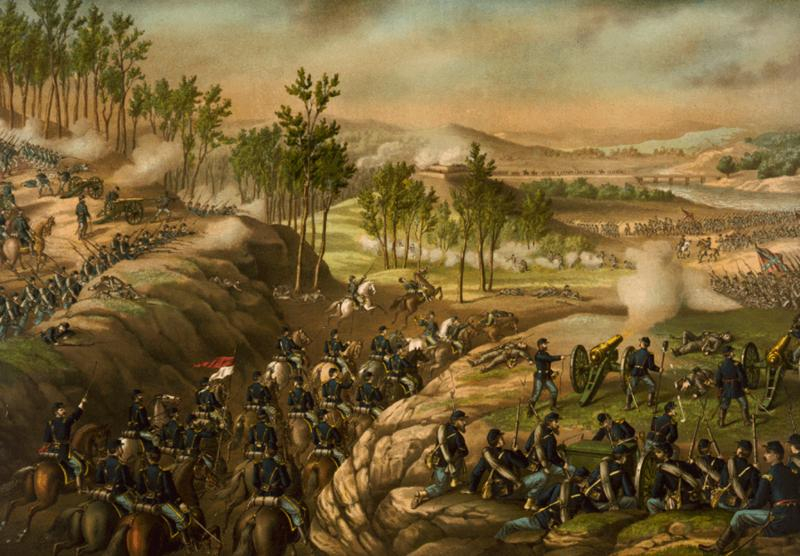
Wikipedia 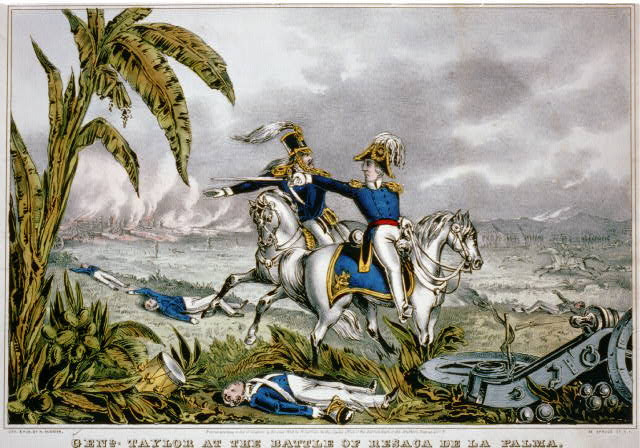
Library of Congress -
Beginning on March 18th, 1864, Sherman took command of the Mississippi Military Division, which was made up of soldiers from three distinct districts. Three infantry corps made up of 72,938 officers and soldiers made up Maj. Gen. George H. Thomas' Army of the Cumberland, which was the largest. Men from the Army of the Potomac who had been moved to relieve Chattanooga in 1863 made up the Twentieth Corps. The Ohio Army of Maj. Gen. John M. Schofield had just one corps, the Twenty-third, with about 12,805 soldiers. Finally, the Army of Tennessee under Maj. Gen. James McPherson, which included two corpsmen who had fought at Shiloh and Vicksburg for Grant and Sherman, totaled 24,380 men. All three of these armies had previously operated separately from one another until 1864. Under Sherman's command, however, these three previously independent forces would now operate together with one objective: the capture of Atlanta.
Sherman ordered his other two forces to advance through Snake Creek Gap and occupy a position opposite the Confederate positions near Resaca on May 9, after McPherson's Army of Tennessee failed to sever the railroad. So, on May 14 and 15, when the Federal forces were engaged, all three of these armies were together for the first time on a single battlefield.
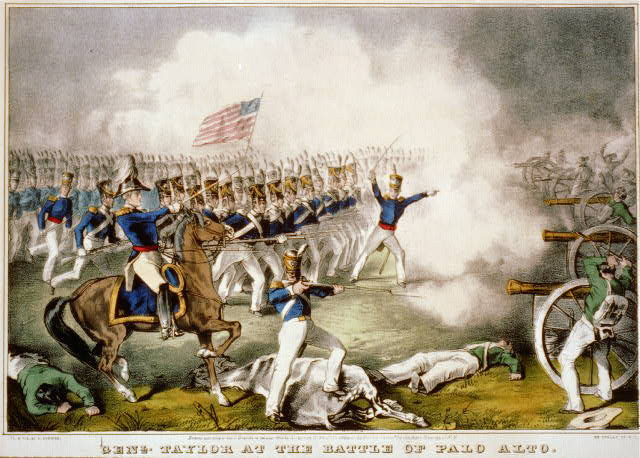
Library of Congress 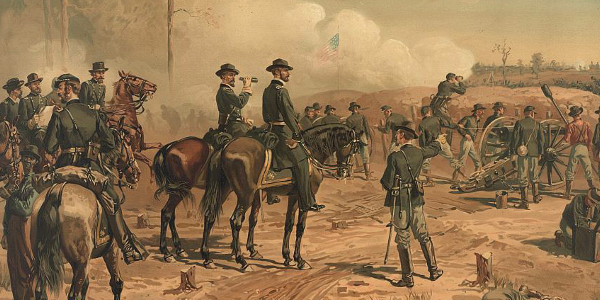
America's Best History -
On the morning of May 14, Sherman gave Sweeny the go-ahead to cross the Oostanaula River, with the intention of following him with two cavalry divisions to destroy the rail line south of Calhoun. He concurrently gave the order for the left of his line to advance forward, deflecting the attention of the Confederates from Sweeny's movements.
Snake Creek empties into the river roughly 100 years south of Lay's Ferry, making it a convenient site for Sweeny to cross the river. While a lesser force dealt with the crossing, Sweeny instructed the remainder of his troops to drive the Confederates away from the ferry. Sweeny briefly withdrew due to inaccurate information about the location of the Confederates before successfully fording the river on the 15th and establishing a Union presence there. Sherman had once more used his numerical advantage to outflank the firmly established Confederates. As a result, Johnston's position became precarious, and throughout the night, his forces abandoned their fortifications and moved further south.
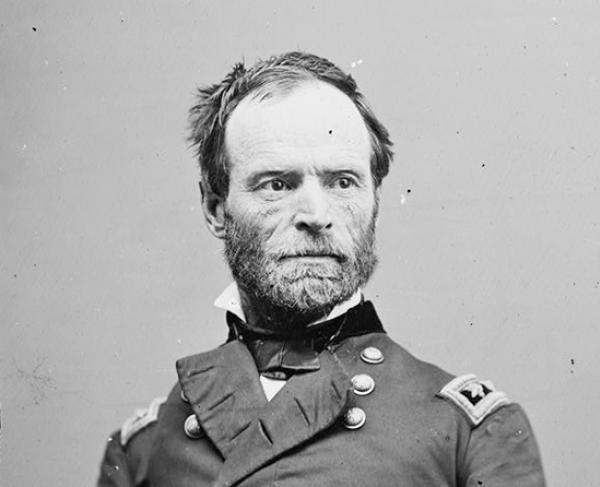
American Battlefield Trust 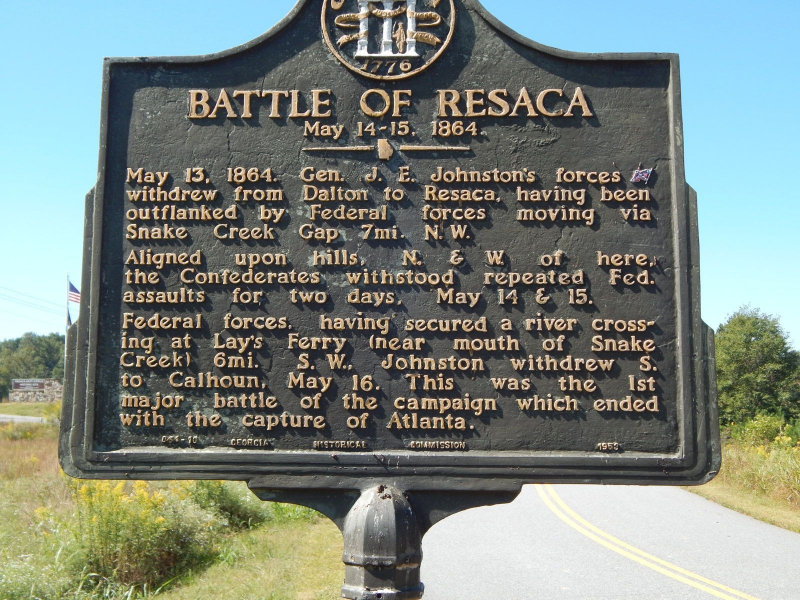
Pinterest -
Stevenson gave the order to position Capt. Maximillian Van Den Corput's "Cherokee Battery" of four Napoleons in front of the Confederate line on the morning of May 15. This positioning, however risky, guaranteed the artillerymen would have unobstructed lines of sight. The Confederates put the guns in an earthen shelter, but two Union regiments, one of which, the 70th Indiana, was commanded by the future president of the United States, attacked before they could link these pits with their main lines. The mission was risky.
The enemy's earthworks, "whose strength, and even exact location, was only exposed by the line of fire which, with awful destructiveness, was belched into our advancing column," were attacked by Harrison and his forces as they advanced. Due to heavy Rebel fire, the Union troops, including Harrison, were forced to retreat back down the slope after infiltrating and overcoming the Rebel soldiers, leaving Van Den Corput's battery's weapons in the area between the Union and Confederate lines. Since both forces were pinned down by heavy skirmishing and artillery dueling at 3 p.m., neither side was able to retake the battery.
After dark, Union Brigadier General John Geary gave the order for soldiers to advance covertly while tearing through the earthworks and dragging all four guns back to the Union line. The successful capture of Van Den Corput's pieces made the Cherokee Battery the only artillery lost by Johnston's army during the Atlanta Campaign.
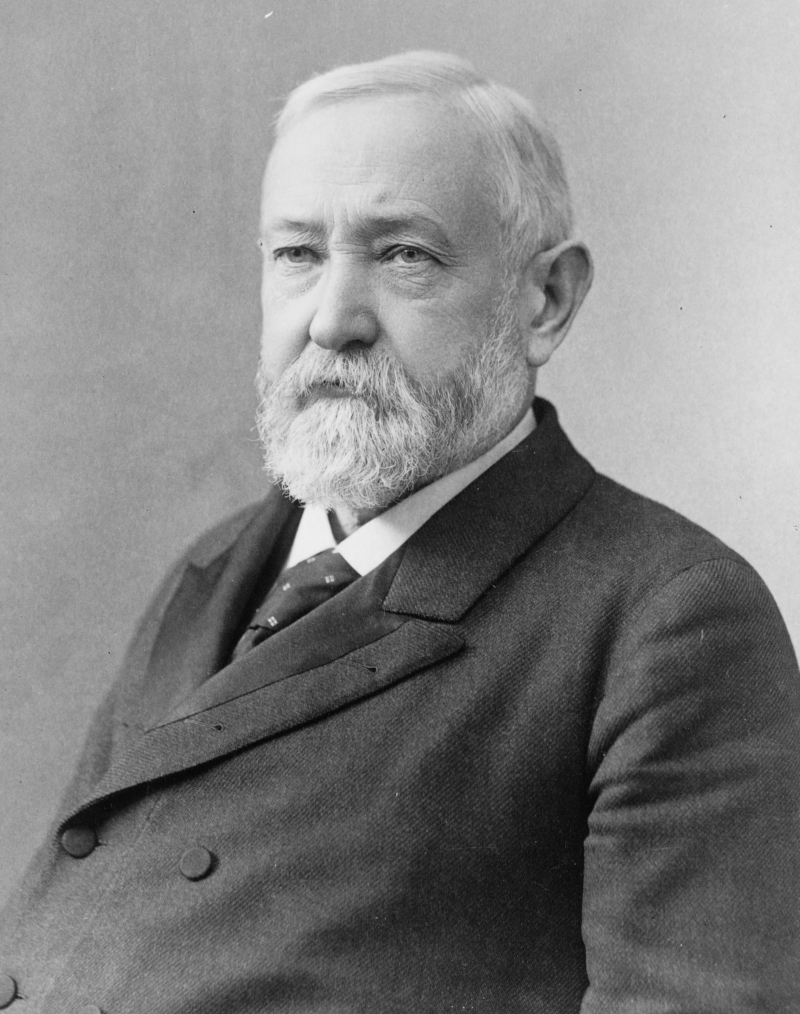
Wikipedia 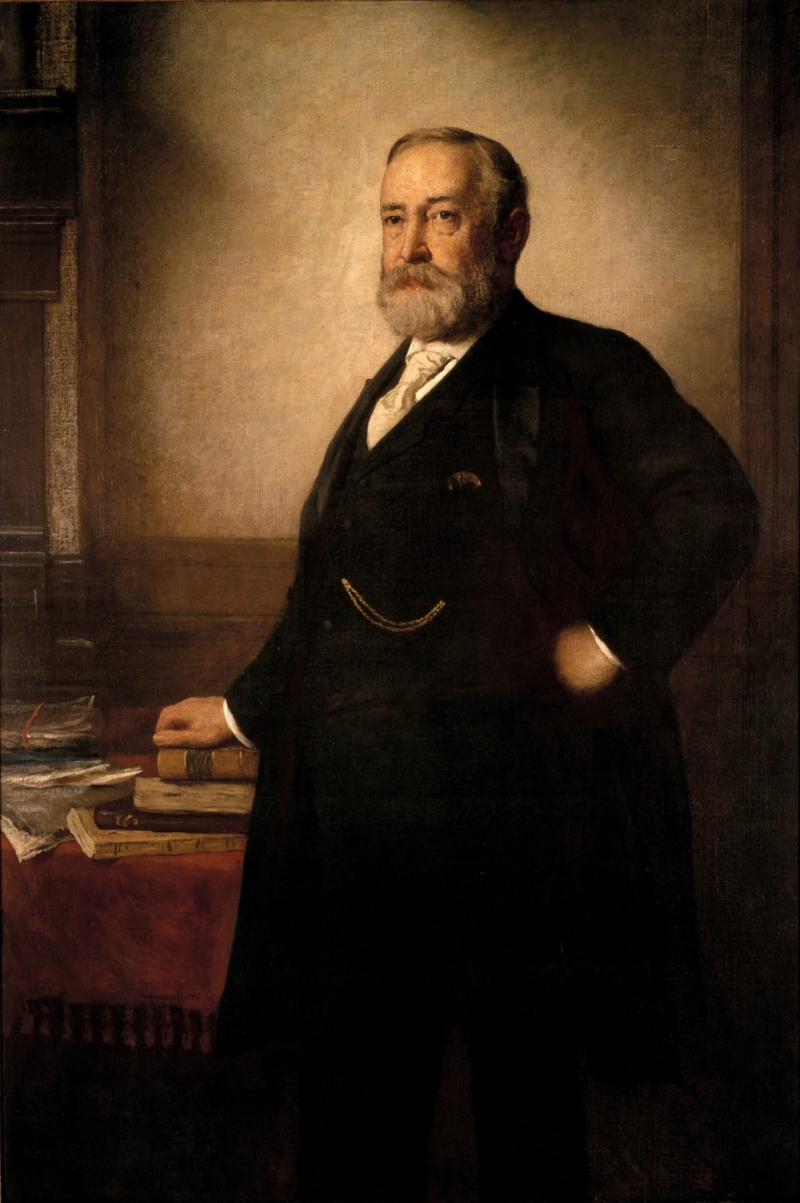
White House Historical Association -
Sherman's Union troops lost a lot of soldiers during the Battle of Resaca, while inflicting comparably few casualties on Confederate forces, and made no real progress during the battle. Even though the Union army suffered a dismal outcome, the combat succeeded in its aim of diverting Johnston and his troops from the Union's attempts to cross the Oostanaula River at Lay's Ferry. It would only have been a matter of time before Johnston's supply line at Resaca was cut once Sweeny and his division crossed, clearing the way for reinforcements.
Without supplies, the Confederate line would not have been able to defend itself against the attacking Federals. When Johnston learned about the crossing, he was eventually forced to leave. Confederate troops started to evacuate in the late afternoon of May 15; however, some skirmishers stayed, firing guns and creating enough noise so Union forces would not detect a retreat. Johnston had left Resaca by 3:30 a.m. on the 16th, and Confederates had set fire to the rail line.
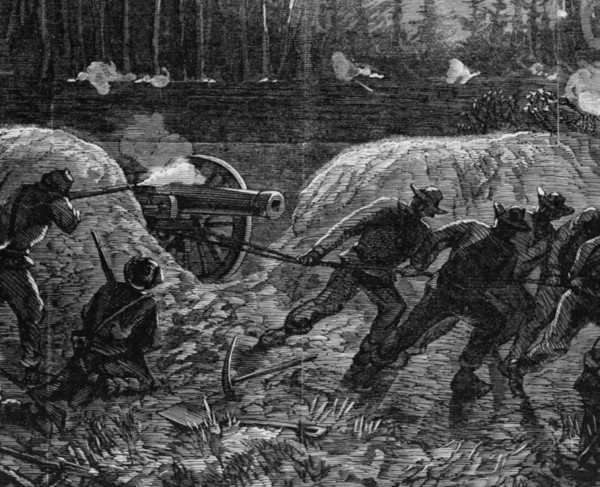
American Battlefield Trust 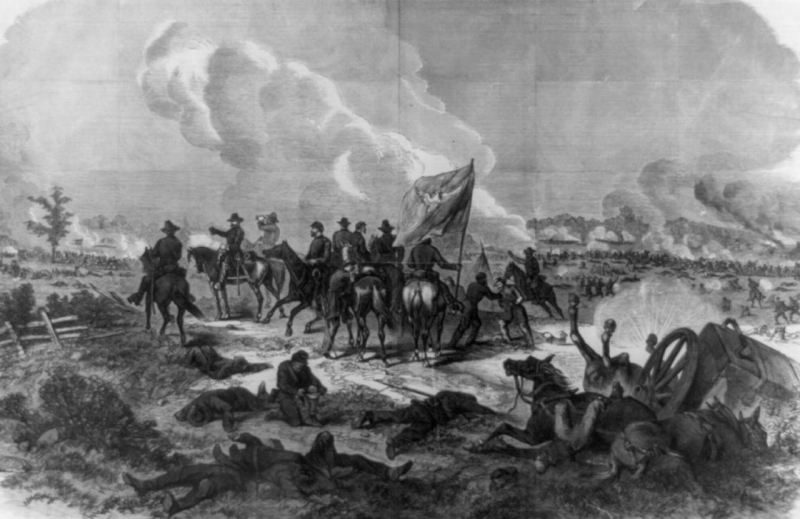
American Battlefield Trust -
The Eastern and Western theaters saw heavy warfare during the summer of 1864. The Battle of the Wilderness between May 5-7 saw nearly as many fatalities—29,800—as the Battle at Spotsylvania Court House in Virginia, which took place between May 8 and 21, resulting in a catastrophically high death toll in the Easter theatre. Resaca suffered a total of 5,547 combined casualties, which is a relatively low amount (2,747 Union, 2,800 Confederate).
Resaca, however, ranks second only to the Battle of Atlanta in terms of total casualties during the summer of 1864 when compared to other battles in the Western theatre. With estimated casualties of 4,000, 3,149, and 2,015 respectively, Kennesaw Mountain, Jonesborough, or New Hope Church during the Atlanta Campaign do not even come close to Resaca's total. Despite not traditionally being regarded as one of the Civil War's most critical battles, these numbers and the tales of the actual conflict show just how terrible and crucial the Battle of Resaca actually was.
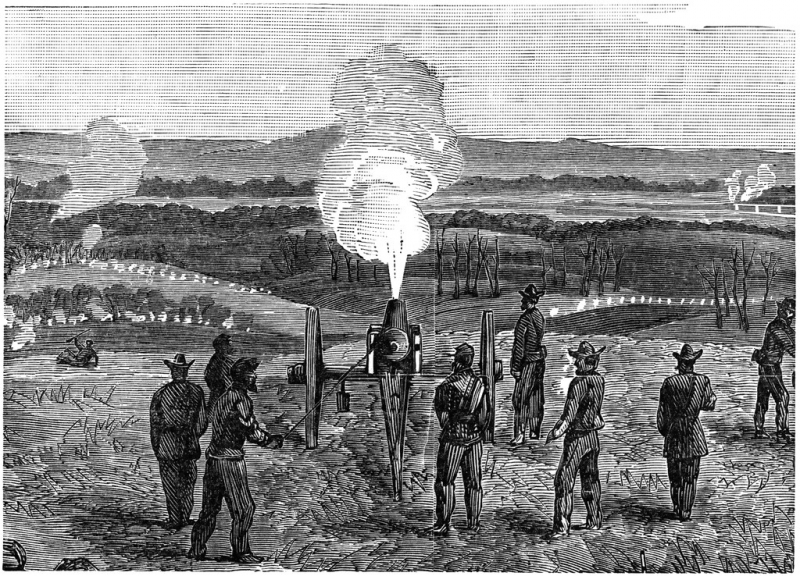
Florida Center for Instructional Technology 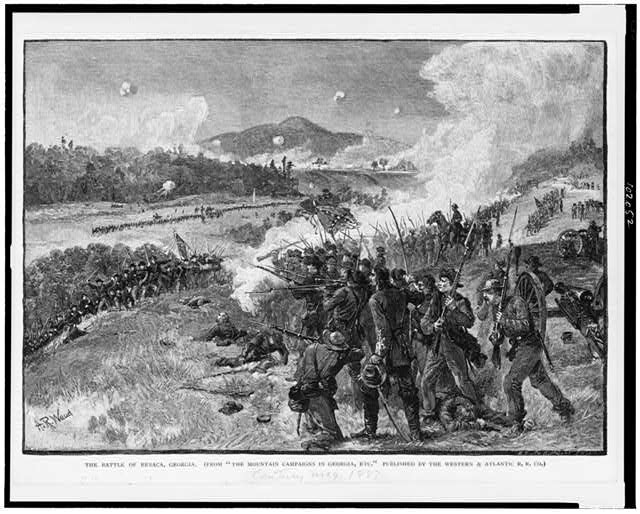
New Georgia Encyclopedia -
Although the current I-75 has destroyed most of the historical terrain, including the location of the majority of the Confederate earthworks, the Civil War Trust and its partners have been able to salvage a sizable portion of significant land at Resaca. The Georgia Battlefields Associations sought to acquire 505 acres of the Camp Creek valley that are now a state battlefield park between 1998 and 2000 in collaboration with Friends of Resaca Battlefield.
Gordon County acquired an additional 65 acres in 2003 from the location of Fort Wayne, which was initially constructed by the Confederates in the summer of 1864 to protect the bridges over the Oostanaula River and then upgraded by the Federals. Finally, in March 2011, 483 acres of land east of I-75, along the Confederate right line, including the location of Van Den Corput's battery, were also able to be saved thanks to a lot of work on the part of the Civil War Trust and their partners (in this case, the Trust for Public Land, the American Battlefield Protection Program, and the Gordon County government). Therefore, The Civil War Trust and its partners have preserved more than 1,000 acres at Resaca.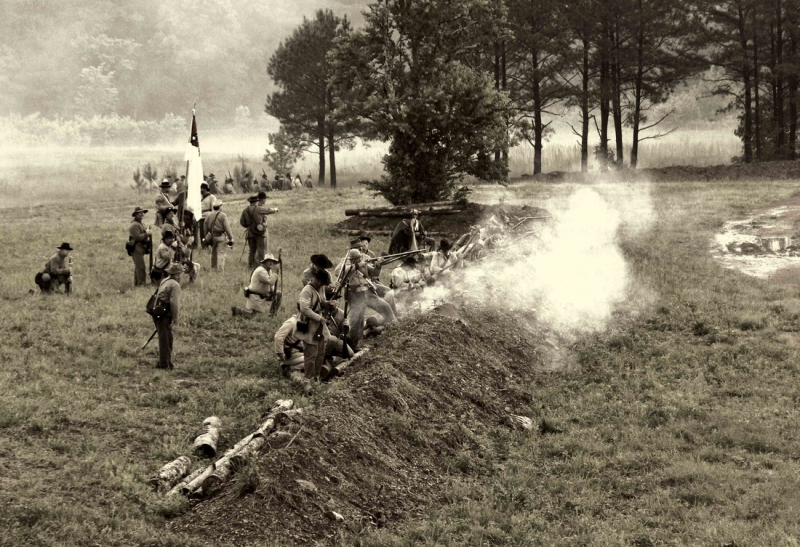
Seeing Southern 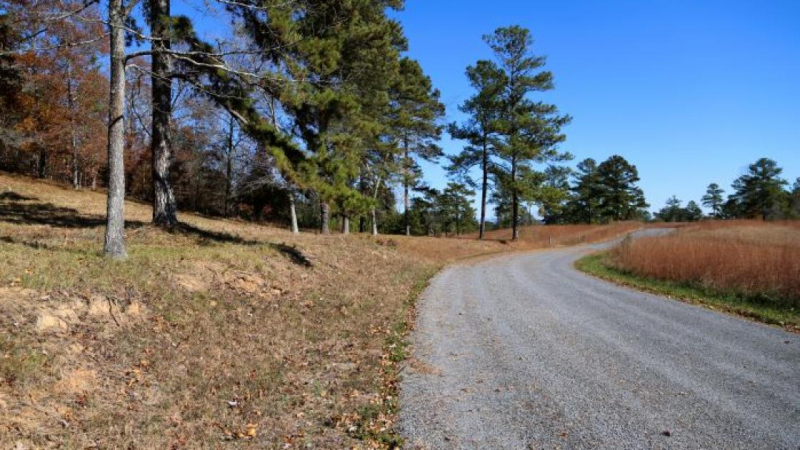
American Battlefield Trust -
The more than 450 Confederate soldiers buried in Resaca's Confederate Cemetery are commemorated there. The cemetery was established on October 25, 1866. After the conflict, Resaca resident Mary S. Green was horrified to see the victims scattered across the fields and she started gathering them to give them appropriate graves. Mary started interring men at what is now known as the Resaca Confederate Cemetery, where 420 unknown Confederate soldiers' graves are organized in concentric circles, using money she had amassed and land she had inherited from her father.
The battlefield, a region of privately owned farms, meadows, and wooded hills, was mostly unaltered for almost a century. Confederate earthworks that spanned about half a mile were destroyed in 1960 when Interstate 75 was built across the area.
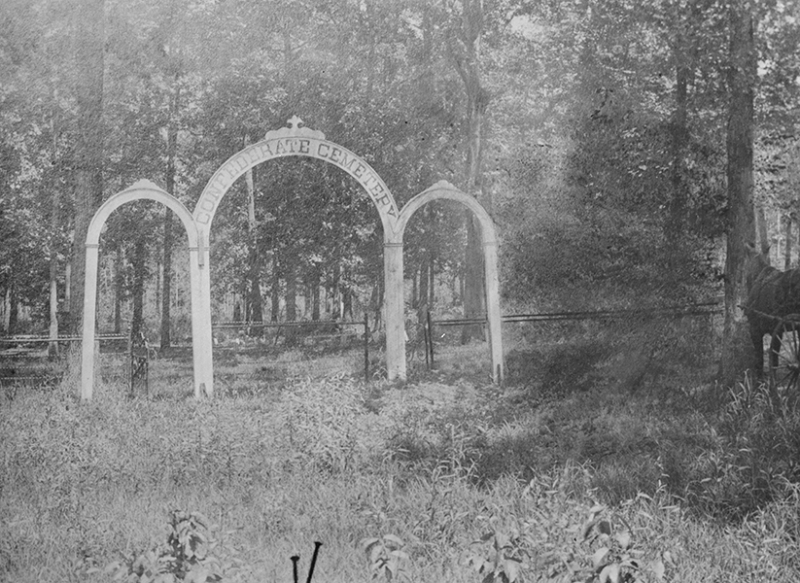
American Battlefield Trust 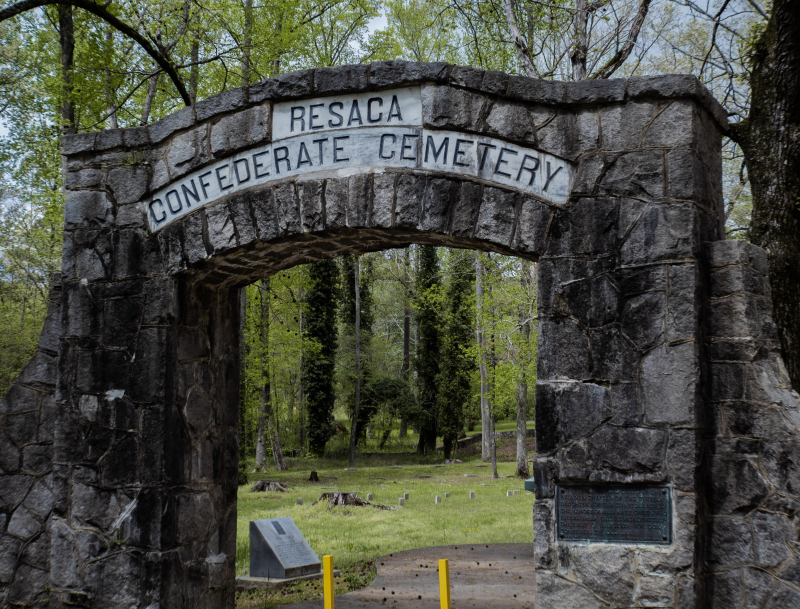
Wikipedia











